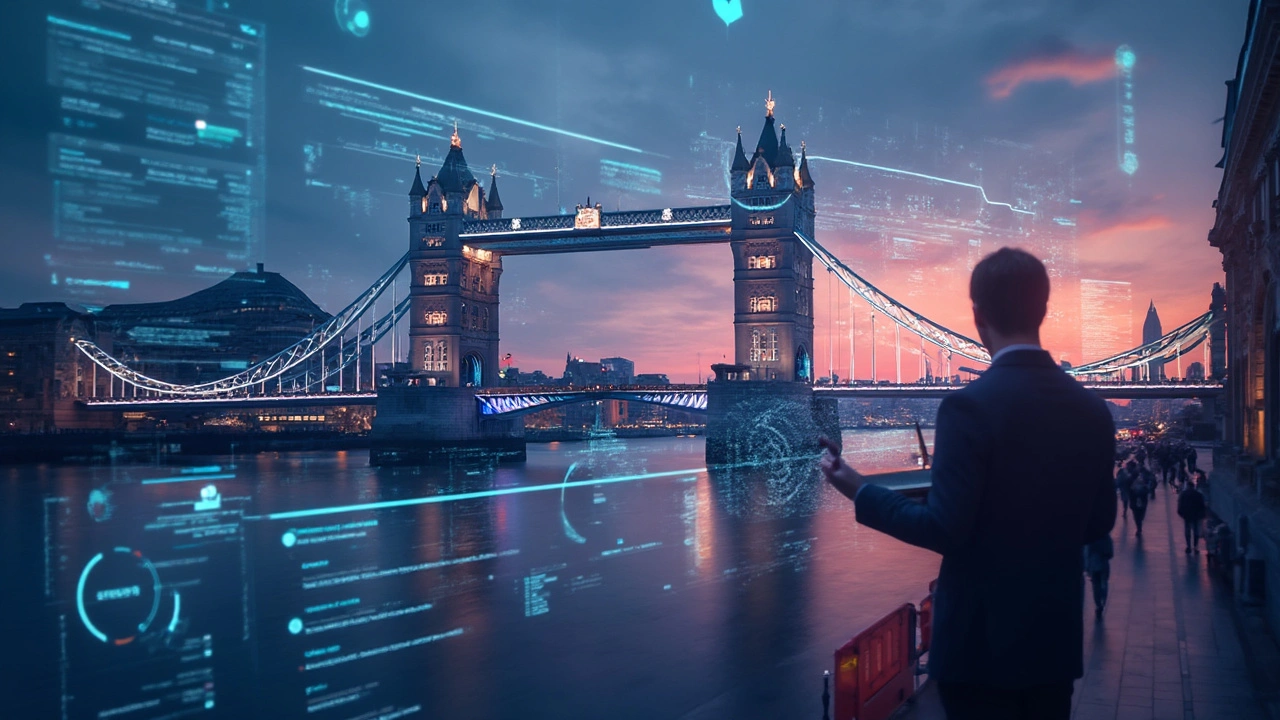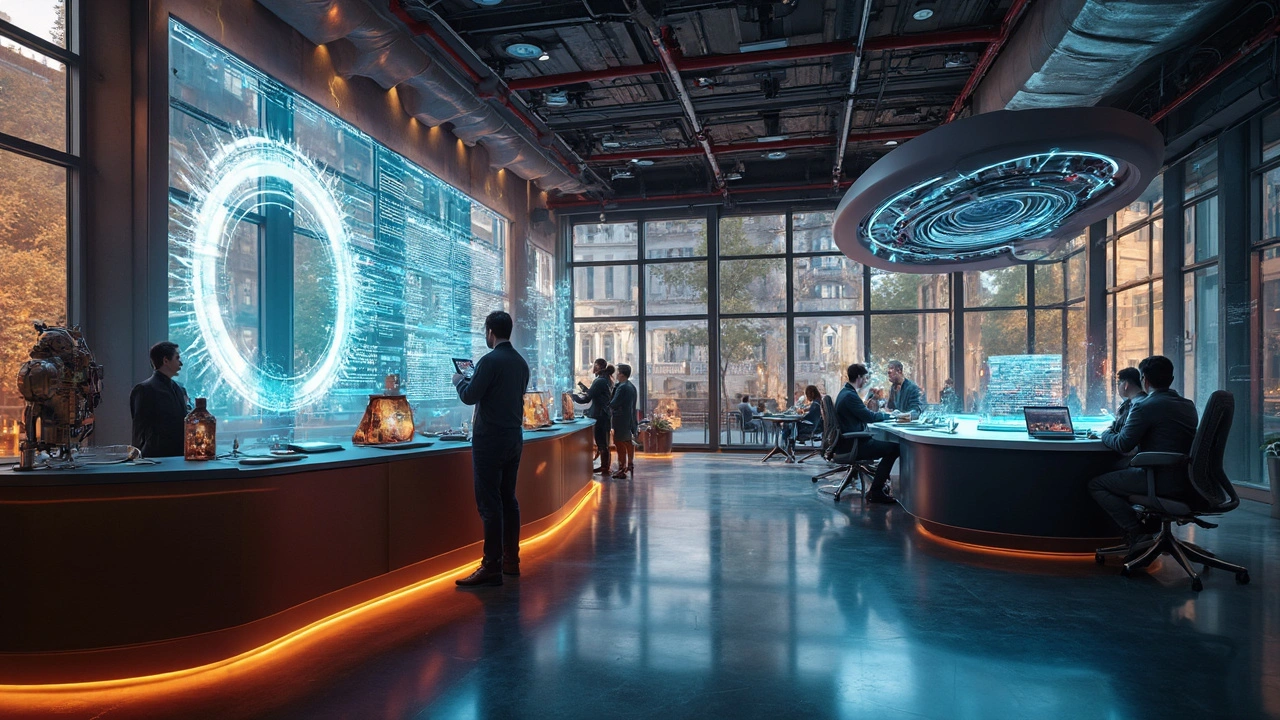Ever wonder why some apps seem to know exactly what you want before even you do? It’s all thanks to AI! Let's take a look at how artificial intelligence can seriously ramp up your user experience game.
First off, personalization is the name of the game. AI makes it possible for businesses to tailor experiences to individual users. Imagine products suggested to you based on your previous purchases or content that fits your interests. This isn't magic—it's smart algorithms working behind the scenes!
But that’s not all AI can do. Predictive analysis is another trick up its sleeve. It helps businesses anticipate what users might need next. Like identifying potential roadblocks in a user's journey before they even hit one. This proactive approach means smarter solutions and happier customers.
Personalization
When it comes to beefing up user experience, personalization is your best buddy. It's all about making each customer feel like your platform was made just for them. So how exactly is AI pulling this off? Well, it dives deep into data to learn about each user's habits, preferences, and behaviors.
Think about how Netflix recommends shows or Amazon suggests products. They're not just taking shots in the dark. These platforms use user data to identify patterns and preferences, allowing them to offer suggestions that feel spot-on. It's like having a digital buddy who knows your tastes even better than you do!
Here’s the nuts and bolts of how AI does its magic:
- Data Analysis: AI systems churn through mountains of data to identify what makes each user tick.
- Adaptive Learning: These smart algorithms keep learning and evolving, adjusting recommendations as user habits change over time.
- Segmentation: By categorizing users based on different factors, AI ensures more relevant interactions, nudging people towards content or products they didn't know they needed but totally do.
Sounds pricey? It's not just for the big leagues. Countless affordable tools cater to startups and small businesses looking to utilize AI for personalization. Tailoring experiences doesn't just make users happy; it builds brand loyalty, too.
Let's add some numbers to the mix. Did you know that 80% of consumers are more likely to purchase when brands offer personalized experiences? That's major motivation to get on the personalization train.
With AI, personalization becomes less of a fancy feature and more of a necessity you can't ignore. Get it right, and everyone feels special, which in turn boosts engagement and sales. Pretty sweet deal, right?
Predictive Analysis
So, what’s this whole deal with predictive analysis? It’s where AI tools really show off their crystal ball abilities. Basically, predictive analysis helps businesses forecast user needs, preferences, and behaviors before they actually happen. It’s like having a sixth sense that’s powered by data.
For instance, streaming services like Netflix use predictive analysis to suggest shows you might enjoy based on your past viewing habits. This not only makes users happy but also keeps them glued to the screen. Now, let’s think about how that works. These platforms gather tons of data about what you watch, when you watch, and even where you pause or skip. Then, they use AI to spot patterns and predict what you might like next.
Here’s how businesses can start using predictive analysis to enhance their user experience:
- Data Collection: Begin by collecting data from user interactions. This could be clicks, searches, or page visits. The more data, the better the predictions.
- Pattern Analysis: AI examines this data to find patterns. It might notice that users in certain locations prefer specific product types.
- Prediction & Customization: Based on these patterns, AI predicts what each user might want next and customizes the experience accordingly.
In fact, businesses that employ predictive analytics are reported to see an average increase of 15% in their customer retention rates, according to a study. That’s a huge deal! It translates to satisfied customers who are more likely to stick around because their needs are being met, often before they even express them.
By adopting these strategies, companies can create smoother, more engaging interactions with their customers. No more users dropping off because they can't find what they're looking for. Instead, they get what they need when they need it, and who wouldn't love that kind of service?

Automation
If you love the idea of work getting done while you sip your coffee, then automation is something you’re going to want to explore. With AI, routine tasks are turned into set-it-and-forget-it operations. Say goodbye to manual drudge work and hello to efficiency.
Let’s talk about chatbots. These nifty tools are changing the customer service game. They handle queries 24/7, solving problems before a human even needs to get involved. And the best part? They’re learning all the time, which means they get better at answering questions as they interact more.
Beyond customer service, AI-driven automation is rocking it in data management too. For instance, think of data entry. Do you like making endless entries into a spreadsheet? Yeah, didn’t think so. AI can automate data entry, reducing human error and freeing up your time for more meaningful tasks.
Businesses are also using AI for automating marketing efforts. Imagine running personalized email campaigns without lifting a finger. Tools like Mailchimp & HubSpot use AI to analyze customer behavior, tailoring your marketing strategy accordingly.
Check out this mind-blowing stat: organizations leveraging automation are seeing a whopping 15% to 30% boost in productivity. Pretty neat, right?
So, if you haven't yet tapped into the power of AI-driven automation, you're missing out on incredible opportunities to make your life easier and your business smoother. Whether you're a solopreneur or running an enterprise, AI can take you places regular automation simply cannot.
User Behavior Insights
Understanding user behavior is like having a treasure map for creating fantastic digital experiences. With the power of AI tools, businesses can collect and analyze tons of data about how users interact with their products. But what’s this all about, really? Well, it's key to enhancing user experience significantly.
AI is constantly watching and learning—sounds cool, right? It tracks every click, scroll, and pause a user makes. From this data, businesses can glean insights into what users love and what’s driving them nuts. This info can then be used to tweak interfaces and improve functionality, making the whole interaction smoother and more enjoyable.
One popular way AI gathers insights is through behavior prediction models. These models analyze patterns to forecast future actions. For instance, if lots of users are dropping off at a certain point in your app, AI might suggest optimizing that part to keep folks engaged. It's like having an assistant pointing out where there might be a leak in your user flow.
Using AI-driven analytics also helps in segmenting users based on their behavior. Companies can create personas, offering personalized services or targeted marketing messages that actually resonate. For example, different users might see different versions of a homepage, tailored precisely to suit their preferences and past behavior.
Data visualization is another biggie. Visualizing user behavior can uncover patterns that aren’t obvious in raw numbers. AI tools can transform this data into easy-to-understand visuals, making it straightforward for teams to come up with actionable strategies. And this doesn’t just sound good on paper; it yields real results in conversion rates and customer satisfaction.
To give a sense of its versatility, check out this table illustrating the diverse AI tools businesses use for user analysis:
| Tool | Primary Function |
|---|---|
| Google Analytics | Tracks user traffic and behavior profiles |
| Hotjar | Heatmaps and session recordings |
| Pendo | Product engagement insights |
In a nutshell, the combination of AI and user behavior insights is transformative. By diving deeper into these insights, businesses aren’t just guessing anymore—they’re making informed decisions that push the user experience to the next level.

Future Trends
The future of AI in enhancing user experience is packed with exciting possibilities. We're looking at a world where AI not only personalizes your screen but also deeply understands context and emotion. Who would've thought your app could sense if you're feeling down and offer a playlist to cheer you up? That's where we're headed!
One of the buzziest trends is the integration of AI with augmented reality (AR) and virtual reality (VR). Imagine shopping online and seeing how furniture looks in your living room before hitting 'buy.' That level of interaction is becoming a reality thanks to AI advancements.
According to Chris Dixon, a partner at Andreessen Horowitz, "The combination of AI and AR could redefine how we perceive and interact with the world, creating layers of information that can adapt to our immediate needs."
Here's a glimpse of where things are headed:
- Emotion Recognition: AI systems are being developed to detect and respond to human emotions, making interactions feel more natural and intuitive.
- Voice User Interfaces: With AI enhancing understanding of natural language, voice commands will become even more precise and personalized.
- Hyper-Personalization: Experiences will not only reflect user behavior but also adapt in real-time to their context and preferences.
Another mind-bending trend is predictive design. Imagine apps that redesign themselves based on user interaction patterns. Google’s AI-driven design tools are already paving the way for this, making it possible to create personalized layouts that evolve with user needs.
The AI predictions and analytics market is booming. Experts predict it’ll reach a whopping $37 billion by 2030. Check out the stats below:
| Year | Market Value ($ Billion) |
|---|---|
| 2025 | 21 |
| 2030 | 37 |
So, it's clear that AI isn't slowing down. It's going to change how we experience everything from customer service to product design. The key is staying ahead, embracing these new technologies, and always keeping the user's journey top of mind.

